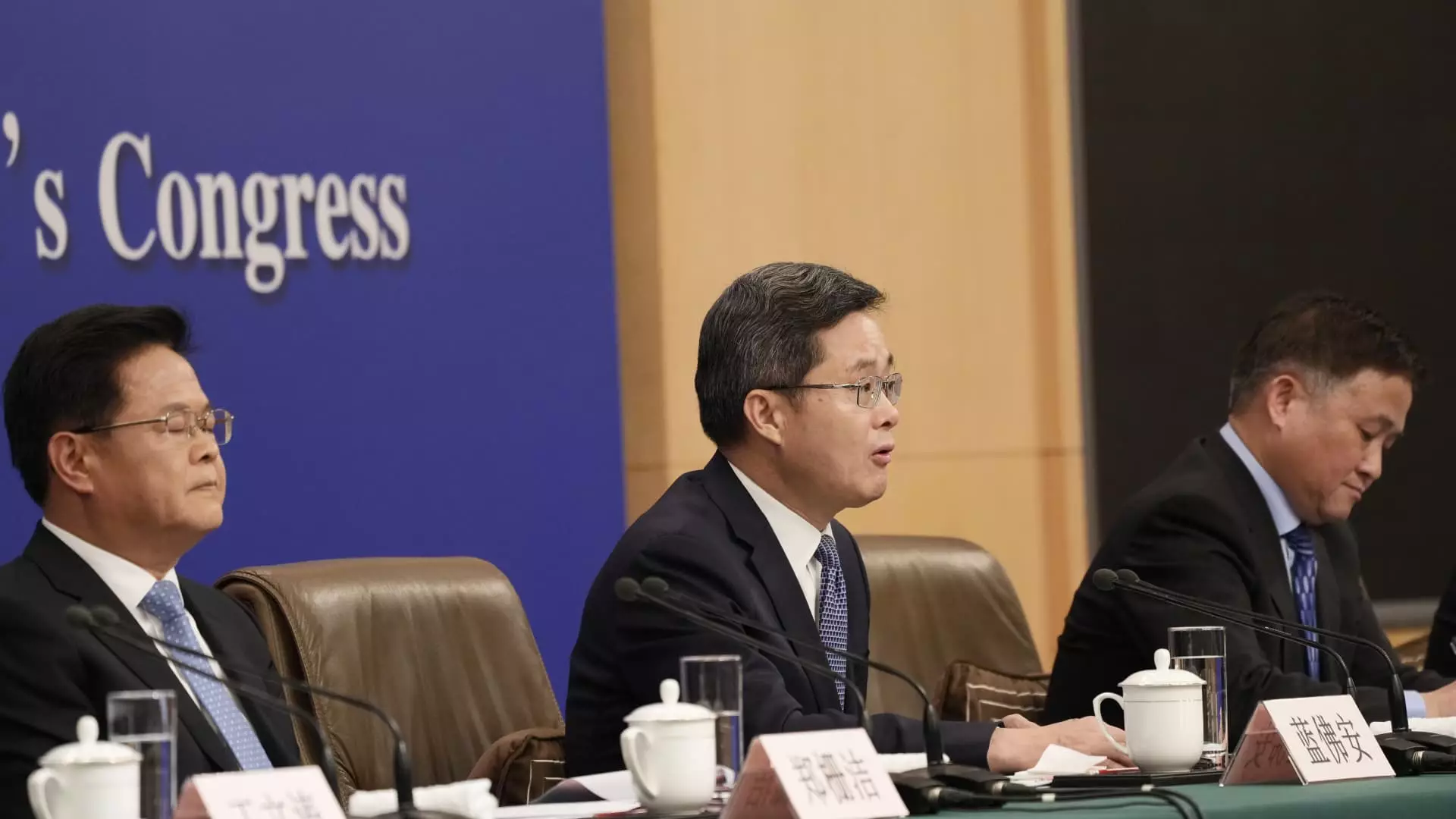In recent statements provided to the media, China’s Minister of Finance, Lan Fo’an, emphasized that the central government has the capability to expand its debt and deficit levels. This assertion brings into focus the ongoing discussions surrounding fiscal policies aimed at addressing the pressing economic issues that the nation faces. Lan detailed four significant policy areas that have reached a consensus stage: supporting local governments in managing debt risks, stabilizing the real estate sector, fostering youth employment, and providing assistance to major state-owned banks. These elements are intertwined in a broader narrative—one that reflects the urgency of bolstering the Chinese economy amidst various challenges.
Economists have increasingly voiced the need for enhanced fiscal support, yet concrete announcements from Beijing remain elusive. Even during a recent wave of high-level policy updates, there was a notable absence of definitive actions. A pivotal meeting held in late September, which involved Chinese President Xi Jinping, highlighted the need for robust monetary and fiscal interventions. However, the specifics of these policies were not disclosed, leading to speculation and varying interpretations in the financial community about the level and type of stimulus required.
Analysts are diverging in their estimates regarding the amount of fiscal stimulus necessary to invigorate China’s economy. Projections vary widely, with figures ranging from approximately 2 trillion yuan (around $283.1 billion) to upwards of 10 trillion yuan. Ting Lu, who serves as the chief China economist at Nomura, pointed out a crucial fact: any potential stimulus requires parliamentary approval, with the National People’s Congress expected to convene later this month. This aspect introduces another layer of complexity, as the timeline and the bureaucratic hurdles associated with legislative approval could delay implementation.
Moreover, it’s critical to understand that the allocation of funds is as important as the total stimulus figure itself. The current economic climate highlights the dual challenges of shoring up strained local government finances while also catalyzing consumer spending. Recent data show that retail sales in China have experienced modest growth, reflecting a lack of robust consumer confidence. This trend, alongside a protracted slump in the real estate market, underscores the necessity for targeted interventions that promote economic recovery.
China’s economic indicators have raised concerns about its ability to meet annual growth targets. With GDP growth recorded at 5% during the first half of the year, there are legitimate fears that the nation may fall short of its approximate 5% target for the entire year. On October 18, the National Bureau of Statistics is poised to release data on third-quarter GDP, a figure that will be critical for market participants seeking insight into the health of the economy.
The recent stock market dynamics paint a picture of volatility. Following a weeklong holiday, mainland Chinese stocks experienced fluctuations, nearly mirroring levels from late September. Just prior to this recent turmoil, the CSI 300 index saw its most significant upswing since 2008 fueled by optimism surrounding potential stimulus measures. The Chinese government’s intent to stimulate the economy appeared to spark a temporary rally, yet lingering uncertainties prompted a reversal of those gains.
In addition to these stock market dynamics, the People’s Bank of China (PBOC) has recently taken steps to mitigate economic pressures. In tandem with the commencement of the Federal Reserve’s easing measures, the PBOC reduced interest rates and extended existing real estate support initiatives by two years. Furthermore, it launched an ambitious program worth approximately $71 billion intended for institutional investors, aimed at boosting stock market investments.
As the Chinese economy grapples with multifaceted challenges, the role of fiscal policy becomes increasingly crucial. The National Development and Reform Commission (NDRC), China’s top economic planning body, has hinted at expediting the use of previously allocated funds, particularly for investment projects. While these developments show a willingness to act, the lack of new stimulus announcements raises questions about the adequacy of these measures.
In a nation where markets are closed on Saturdays, it is evident that stakeholders are eagerly awaiting further clarity regarding government strategies. As the global economic landscape continues to evolve, China’s approach to navigating its debt and deficit will play a pivotal role in determining its sustained growth. The coming weeks will be critical as policymakers finalize their plans and seek to stabilize an economy that is navigating through turbulent waters.


Leave a Reply